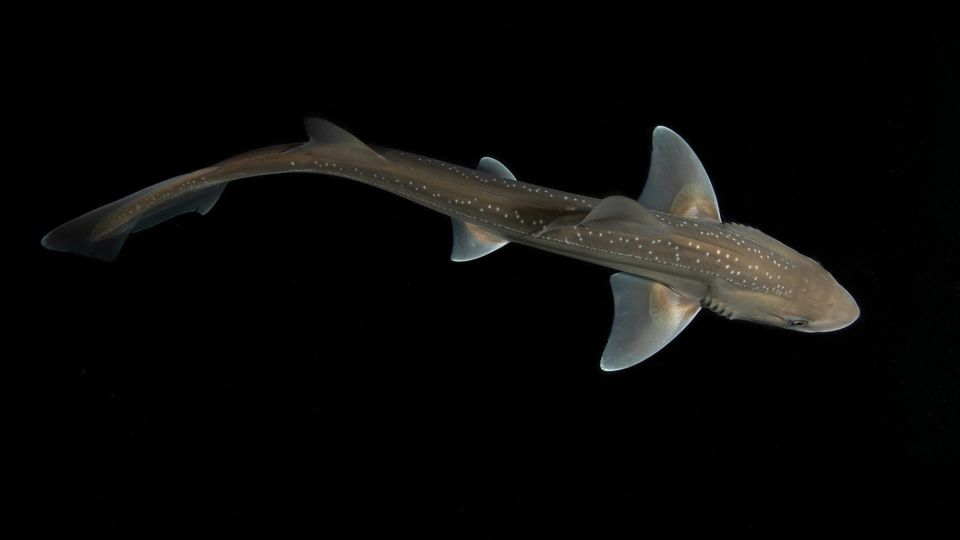Sharks have a reputation for being silent killers — the top ocean predators are stealthy hunters, but they also lack sound-producing organs found in many other fish. Now, a groundbreaking new study has revealed one shark species may be more vocal than previously thought, making noises comparable to the sound of a balloon popping.
For the first time, scientists have recorded evidence of the rig shark — Mustelus lenticulatus — actively producing sound by snapping its teeth, according to research published Tuesday in the journal Royal Society Open Science.
“How sharks maintain social groupings or communicate was thought to be largely body language and possibly through chemical signals; but for the most part has been a mystery,” said Neil Hammerschlag, president of Atlantic Shark Expeditions and executive director of the Shark Research Foundation, a not-for-profit group that aims to increase knowledge and promote conservation of sharks. Hammerschlag was not involved in the research. “This study opens up a whole new possibility of communication via sound.”
The rig shark, a small species that inhabits the coastal waters of New Zealand, typically lives near the seafloor and plays a key role in the region’s commercial fishing industry. Unlike most fish that rely on a swim bladder — a gas-filled organ that helps fish maintain their buoyancy and produce and detect sound — sharks lack this feature, making noise production seem unlikely.
Lead study author Dr. Carolin Nieder first became curious about sharks’ acoustic capabilities after hearing an unexpected clicking sound during behavioral training experiments while earning her doctoral degree at the University of Auckland in 2021. Nieder is now a postdoctoral investigator with the T. Aran Mooney Lab at the Woods Hole Oceanographic Institute in Massachusetts.
Although she was unable to investigate the mysterious clicking at the time, it held her interest. Now, Nieder and her team have reported fascinating findings from studying 10 juvenile rig sharks — five males and five females — caught off the coast of New Zealand.
The scientists housed the sharks in large marine laboratory tanks, maintained with proper seawater conditions and food, from May 2021 to April 2022.
To carefully record any sounds made, the team transferred the sharks to individual tanks equipped with underwater microphones or hydrophones. As the sharks were moved between tanks or gently held, they began making clicking noises, similar to the ones Nieder noticed years ago.
Each click was extremely short, lasting an average of 48 milliseconds, which is faster than a human eye blink.
Researchers also identified the clicks as broadband, meaning they occurred over a wide range of frequencies from 2.4 to 18.5 kilohertz — some of which can be detected by humans, according to the study.
In terms of volume, the clicks were intense, reaching about 156 decibels.
The study noted most clicks occurred within the first 10 seconds of handling, becoming less frequent over time. During the initial 10 seconds, the sharks emitted an average of seven clicks, compared with the final 10 seconds with an average of only two clicks.
“As the animals got used to the daily experimental protocol, they then stopped making the clicks altogether, as if they got used to being in captivity and the experimental routine,” Nieder said via email. “This led us to consider that maybe we are observing a sound making behavior rather than a strange artifact.”


